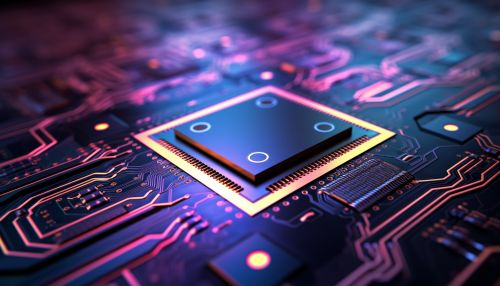CMOS
Introduction
Complementary Metal-Oxide-Semiconductor (CMOS) is a technology used for constructing integrated circuits. CMOS technology is used in many types of electronic equipment including microprocessors, microcontrollers, static RAM, and other digital logic circuits. CMOS technology is also used for several analog circuits such as image sensors, data converters, and highly integrated transceivers for many types of communication.


History
The CMOS technology was invented in 1963 by Frank Wanlass while working for Fairchild Semiconductor. The first CMOS integrated circuits were made by RCA in 1968. Since then, the technology has evolved and improved significantly. The main driving force behind the development of CMOS technology has been the relentless scaling of the minimum feature size, also known as Moore's Law.
Technology
CMOS technology is based on a combination of p-type and n-type metal-oxide-semiconductor field-effect transistors (MOSFETs) to produce logic functions. The technology is called "complementary" because it uses both PMOS and NMOS transistors. The PMOS transistors provide a '0' logic level, while the NMOS transistors provide a '1' logic level. This complementary arrangement provides a high output impedance in the off state and a low output impedance in the on state, which is the desired characteristic for digital logic circuits.
Advantages
CMOS technology has several advantages over other technologies. The most significant advantage is its low power consumption. When a CMOS circuit is not changing its state, it consumes virtually no power. This makes CMOS ideal for battery-operated devices. Other advantages include its high noise immunity and its ability to integrate a large number of transistors on a single chip.
Disadvantages
Despite its many advantages, CMOS technology also has some disadvantages. One of the main disadvantages is that it is susceptible to static electricity, which can damage the gate oxide layer. This is why CMOS devices require special handling during manufacturing and assembly to prevent electrostatic discharge. Another disadvantage is that CMOS circuits are slower than other types of circuits, such as bipolar junction transistor circuits.
Applications
CMOS technology is used in a wide variety of applications. It is used in microprocessors, microcontrollers, and other digital logic circuits. It is also used in analog circuits such as image sensors and data converters. In addition, CMOS technology is used in highly integrated transceivers for many types of communication.
Future
The future of CMOS technology is promising. With the continuous scaling of the minimum feature size, CMOS technology is expected to continue to evolve and improve. However, as the feature size approaches the atomic scale, new challenges and obstacles will arise. These challenges will require innovative solutions and may lead to the development of new types of technology.
